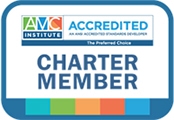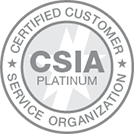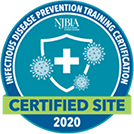Recently, I was asked for guidance on how to implement effective team development. This task is a daunting one for many leaders and managers, whether working with a small or large team. For many, the initial reaction is to mentally scroll down the list of current team members and assess their strengths and weaknesses. This undoubtedly causes stress and, in fact, the result is often that team development moves to the bottom of the pile and the status quo is maintained – or worse – underperformers are retained and validated in their roles.
I would challenge leaders that team development is a critical building block to success and it can be accomplished efficiently and without undo drama. The savvy executive in a trade association or professional society must begin with the #1 tenet in our profession – “Mission is King” and the team’s primary function is execution of the strategic plan developed by the board in pursuit of that mission.

1. Start with an accountability chart that identifies seats or roles, not people. The accountability chart should have a direct and obvious relationship to the organization’s strategic plan. This exercise will help you identify the critical functions and skill sets required on your team. Once you begin to fill in the people who occupy the seats, note that individuals may play more than one role, but each area of accountability must have only one person ultimately responsible. Often, shared responsibilities or unclear accountabilities underlie team dysfunction and undermine maximum performance.
2. Ensure you have the “right people in the right seats” on your team. The Entrepreneurial Operating System (EOS) Model reminds us that you can’t have a great team, and achieve a great vision, without great people. Individuals can play multiple roles on a team and often do in associations, but each role must be suited to the person’s unique talents and skills.
3. Delegate accountability, not “stuff.” Each individual on the team should clearly understand his or her role and be held accountable for outcomes, not tasks. Get in the habit of asking “What did you accomplish?” rather than “What did you do?”
4. Make meetings meaningful! All meetings should have a defined purpose, and an agenda and the facilitator should be prepared. Before the meeting wraps, review all decisions made, the list of action items, and who is responsible for each. If you participate in a meeting with a high performing team, you will note that every person participates, and has valuable information and insight to provide, no matter how junior the person’s role. This results from each person having clear accountabilities.

5. Conflict is healthy! High performing teams are not made up of a group of yes-men-and-women. Differences of opinion and respectful, professional conflict are healthy attributes of successful teams. When accountability is clearly defined, the ultimate decision maker is informed by the varying opinions of other team members.
6. Recognize that as organizational priorities shift, so too should the accountability chart. In times of growth, this can occur as often as every six months! This doesn’t mean your staff turns over that frequently, but that roles are constantly morphing and being re-defined. The accountability chart is the mechanism for providing clarity to each individual on the team who is responsible for what in a dynamic environment.
7. Own your culture. Every team has a culture and acknowledging it will help you identify individuals who will thrive within it. For instance, people who appreciate a high level of hierarchy and independence may struggle in a team culture that is more interactive and collaborative.
8. Hire vs. Train. Be clear within your team if your preference is to hire strong talent for defined seats or train from within. The decision is often one of time vs. expense. If you decide to train your talent, it is critical you dedicate the appropriate time and resources to accomplish that training. Otherwise, the rest of the team my simply view the trainee as an underperformer.
9. Measuring your Success. The success of your team should be measured against the outcomes defined by the organization’s strategic plan. Within your operating plan, team members should be clear on what metrics will be used to measure success within their areas of accountability. Be sure to celebrate successes and acknowledge achievement!
Finally, recognize that team development is an ongoing exercise but with the right process in place, starting with the accountability chart, it gets easier over time. It is definitely worth the effort!




